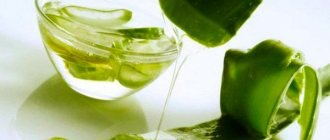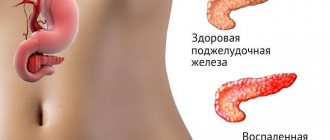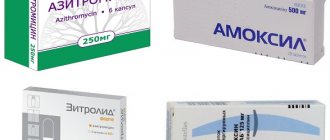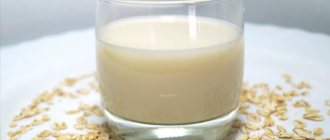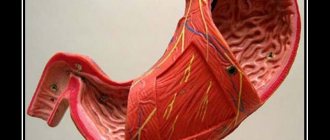- September 8, 2018
- Gastroenterology
- Elena Klimova
The life of a modern person is characterized by stress and psychological overload, unhealthy diet, snacking on the go and abuse of fast food. With such a rhythm of life, we sometimes have no time to pay attention to our health, for example, getting rid of bad habits, learning to avoid stressful situations, cooking and eating healthy foods and dishes. The consequence of an unhealthy lifestyle is stomach diseases that are common among the population. One of the most common pathologies is erythematous gastritis.
A few years ago, only 20% of people were diagnosed with such a diagnosis; today the percentage of patients has tripled. Among the patients there are more young people, even teenagers (14-15 years old). Pathological processes in the stomach, resulting from poor nutrition, provoke the onset of the disease.
Erythematous gastritis - what is it?
First of all, it is necessary to find out the nature of this disease. As mentioned earlier, it is a gastric pathology. The stomach is an organ that plays a significant role in the digestion process, producing acids necessary for the breakdown of food. The walls of this organ are covered with a mucous film that protects it from the harmful effects of acids. When this membrane is damaged, acids have a destructive effect on the stomach and cause irritation and painful symptoms.
Erythematous gastritis is characterized by the appearance of red or pink spots (“erythrema” - redness) of an oval shape on the gastric mucosa; underlying pathological changes in the organ are not observed. Redness in this form of the disease is a consequence of dilation of blood vessels and a manifestation of the inflammatory process. With timely treatment, pathological phenomena quickly disappear.
What is erythematous gastritis with total damage to the stomach?
Conventionally, different forms of gastritis can be divided into those that are acute, accompanied by severe atrophic and erosive processes, as well as those that affect only the upper layers of the gastric epithelium. Erythematous gastritis is a chronic form of the disease, accompanied by the appearance of round or oval spots on the upper layer of the stomach lining. If the pathology is not treated, the spots progress and turn into erosions. Then erythematous gastritis passes into the erosive stage, dangerous by the formation of ulcers and atrophy of the glands.
The disease can be focal and diffuse, the second type is also called pangastritis. Among the methods of classifying the types of disease, there is also a division into a superficial and exudative, eosinophilic form (with this lesion, eosinophils accumulate on red spots, the disease occurs most often in allergy sufferers and those infected with parasites).
As for focal gastritis, the antral form is very common - damage to the antrum, located at the transition of the stomach to the intestines. With antral gastritis, reflux is often observed, associated with the reflux of the contents of the upper intestine into the stomach.
Separately, we should highlight a dangerous pathology called atrophic gastritis. It is often combined with the erythematous form, affecting the digestive glands. Atrophy can lead to severe deterioration of digestion.
The mechanisms of the disease are based on many pushing factors. Thus, pathology appears in smokers and those who abuse alcohol. But again - not always. More significant reasons contribute to the development:
- gross violation of nutritional principles;
- infection with Helicobacter pylori and its activation with a sharp decrease in immunity - erythematous exudative gastritis can appear against the background of any other disease;
- consumption of fatty and fried foods on a regular basis, abuse of soda and foods rich in dyes, preservatives and flavors;
- frequent stress and emotional tension - people with responsible work that involves heavy mental stress are more likely to suffer from gastritis than others;
- heredity - eliminating the genetic predisposition to the development of gastritis is not yet within the power of medicine;
- improper use of medications - the greatest danger lies in the use of NSAIDs, antibiotics and glucocorticosteroids without a doctor’s prescription;
- some dietary habits - eating too cold or hot foods, overeating;
- viral diseases and infections, excluding Helicobacter pylori, can also cause gastritis.
All these factors can lead to the formation of erythematous pangastritis, however, even if these prerequisites are present in a person’s life, there is still no 100% guarantee of the development of the disease.
Important! Pangastritis can occur with both high acidity and low acidity, so therapy in these cases will differ significantly.
Some patients mistakenly believe that increased acidity levels are much more dangerous than low ones, as they lead to ulcers. This is not entirely true, because gastritis with low pH can also cause ulcers, weakened immunity and increases the body's vulnerability to parasites and bacteria.
The exudative form of the disease is not much different from other manifestations of gastritis:
- during an exacerbation, acute pain appears on the left under the ribs, which can radiate to different parts of the stomach;
- heartburn, nausea, stool disorders develop;
- The main difference between gastritis and diseases of the pancreas is acute pain when you feel hungry, which subsides as soon as you eat something.
The chronic course is accompanied by a decrease in symptoms, but other signs appear: the emotional state of a person changes, his appearance worsens, as the body suffers from a lack of nutrients.

Diagnosis is an important step in determining the form of gastritis. This is necessary to prescribe effective treatment. Tests and instrumental examination will help assess the condition of the gastric mucosa. Here's what's used to make the diagnosis:
Complex therapy of erythematous gastritis is the key to rapid recovery and sustainable remission. If the patient makes an effort, he will be able to stop the pathological processes. Following a diet, taking medications as prescribed by a doctor, using folk remedies and physiotherapy will help restore the mucous membrane.

With erythematous gastritis, the diet is divided into 2 types: strict restrictions in the acute phase and moderate nutrition during remission. It is undesirable to consume the following products for any form of gastritis:
- carbonated drinks, strong tea and coffee, as well as alcohol;
- fatty, spicy, fried, too salty and spicy;
- sweets, an abundance of baked goods and desserts with dyes, flavors and other chemicals;
- spicy vegetables - onions, radishes, radishes, garlic, rutabaga;
- any fast food, as well as store-bought semi-finished products;
- milk during the acute period is limited;
- smoked and canned products.
You need to eat in small portions. During an exacerbation, food is ground, low-fat broths and lean meat are consumed. The rest of the time you can eat baked vegetables and fruits, soups, homemade sweets - marshmallows, marshmallows, jam and butter. Particularly useful are unrefined oils – olive, flaxseed.
You can take any tablets or capsules only after a doctor’s prescription:
- Antibiotics . Used to identify an infectious agent in the body.
- Antispasmodics . They are used during the period of remission when pain appears, as well as for low-intensity sensations during an exacerbation.
- Sedatives . Prescribed to correct the patient's psychological state.
- Antacids . They are used to protect the walls of the stomach from the action of acid in the erythematous form of gastritis.
- Proton pump inhibitors . Used to change the activity of glands in order to normalize the production of hydrochloric acid.
- Other drugs . Enzymes may be prescribed to improve digestion; NSAIDs are used strictly according to instructions for severe pain.
Taking immunostimulating drugs and vitamins is of particular importance.
The erythematous form of gastritis requires moderate physical activity outside the period of exacerbation. The doctor selects a complex that the patient performs at home independently. Exercise therapy relieves pain, strengthens the immune system, and helps fight inflammation.
Physiotherapy methods help get rid of all manifestations of gastritis. Some of them normalize stomach acidity (magnetic therapy, mineral treatment), others relieve tension and stress (sensory and aerotherapy). There are methods that relieve inflammation and pain: electrophoresis, mud applications, laser and UHF therapy, cryotherapy.
Erythematous exudative gastritis in remission can be treated with folk remedies. Some of them are intended for the treatment of diseases with low acidity, others are used at elevated pH levels. Juices from cabbage and potatoes are used, as well as decoctions of plantain, chamomile, calendula and yarrow. Sea buckthorn oil is very effective in treating gastritis.
If a person has managed to achieve stable remission from gastritis, then he must constantly adhere to some recommendations. They will be useful to all people who are not faced with the disease:
- proper nutrition - healthy, fresh foods, optimal cooking temperature, no overeating;
- exclusion from the menu of unhealthy foods that are prohibited for gastritis;
- mandatory consumption of vegetables every day;
- moderate physical activity;
- giving up bad habits - smoking and alcohol;
- regular visits to the doctor to identify hidden sources of infection and inflammation, as well as their timely treatment;
- control of medication consumption;
- ability to cope with stress, alternating work and rest schedules.
Erythematous pangastritis and its other forms can be treated with proper effort. If you do not ignore the symptoms, visit your doctor on time and follow his instructions, you can forget about gastritis for a long time.
source
The life of a modern person is characterized by stress and psychological overload, unhealthy diet, snacking on the go and abuse of fast food. With such a rhythm of life, we sometimes have no time to pay attention to our health, for example, getting rid of bad habits, learning to avoid stressful situations, cooking and eating healthy foods and dishes. The consequence of an unhealthy lifestyle is stomach diseases that are common among the population. One of the most common pathologies is erythematous gastritis.
A few years ago, only 20% of people were diagnosed with such a diagnosis; today the percentage of patients has tripled. Among the patients there are more young people, even teenagers (14-15 years old). Pathological processes in the stomach, resulting from poor nutrition, provoke the onset of the disease.
First of all, it is necessary to find out the nature of this disease. As mentioned earlier, it is a gastric pathology. The stomach is an organ that plays a significant role in the digestion process, producing acids necessary for the breakdown of food. The walls of this organ are covered with a mucous film that protects it from the harmful effects of acids. When this membrane is damaged, acids have a destructive effect on the stomach and cause irritation and painful symptoms.
Erythematous gastritis is characterized by the appearance of red or pink spots (“erythrema” - redness) of an oval shape on the gastric mucosa; underlying pathological changes in the organ are not observed. Redness in this form of the disease is a consequence of dilation of blood vessels and a manifestation of the inflammatory process. With timely treatment, pathological phenomena quickly disappear.
There are several forms of the disease. One type is antral erythematous gastritis. How is it characterized?
First of all, it is necessary to answer the question: antral erythematous gastritis - what is it and what are its features? This form of pathology occurs if the disease manifests itself in the antrum (the area in which the stomach passes into the duodenum).
- Erythematous exudative gastritis is inflammation of certain areas of the gastric mucosa due to an increased level of eosinophils in the blood or parasitic invasion.
- Diffuse gastritis, or pangastritis, is a total lesion of the mucous membrane of an organ or most of it.
- Focal erythematous gastritis is a partial lesion of the surface of the stomach walls. Appears due to poor nutrition and alcoholism. It is dangerous due to the occurrence of complications in the form of ulcers.
- Atrophic gastritis is an inflammation that results in atrophy of the glands.
Everyone probably knows the expression: “Forewarned is forearmed.” Knowing the possible causes of diseases, you can prevent them through preventive measures. What is the reason for the appearance of gastric pathologies?
Among the factors that provoke erythematous gastritis are:
- Stress factor (severe stress or chronic stressful situations).
- Drug treatment (some medications, for example, hormonal drugs, antibiotics, NSAIDs, have a destructive effect on the gastric mucosa).
- Non-compliance with diet, frequent consumption of unhealthy foods (hot or cold foods, fatty, spicy foods, smoked foods).

- Unfavorable heredity (presence of relatives with gastrointestinal pathologies).
- Metabolic disease.
- Fungal, viral and bacterial infections.
- Bad habits - smoking and alcoholism (nicotine and ethanol irritate the lining of the stomach).
- Other negative impacts.
Signs of erythematous inflammation may hardly appear at the onset of the disease. The main symptom of erythematous gastritis is stomach pain. Most often, this is an aching pain, it appears in the morning or at night, and disappears after eating.
Other characteristic manifestations of pathology are:
- nausea (especially after eating pickles, smoked, fried, fatty or spicy foods);
- vomiting, which brings relief to patients;
- decreased appetite and weight loss.
Belching, heartburn and a burning sensation in the stomach, pain in the esophagus, a feeling of a lump in the throat, diarrhea and constipation are often observed. This symptomatology negatively affects the nervous system, causing depression and constant fatigue.
The presence of at least one of the above signs is a reason to consult a doctor, because early diagnosis and treatment makes it possible to completely get rid of gastritis.
To identify pathology and select adequate therapy and diet for treatment, it is important to carry out diagnostic procedures.
If chronic gastritis is suspected, the following types of medical examinations are used:
- Ultrasound examination.
- Magnetic resonance imaging.
- Fibroesophagogastroscopy.
- Laboratory tests (general blood and urine tests are ordered to measure the pH of the cavity).
An important diagnostic method is endoscopic examination; it reveals the presence of exudative gastritis and identifies foci of inflammatory processes. During the examination, a probe is inserted into a person’s stomach to see the condition of the gastric mucosa. Sometimes the doctor may prescribe additional diagnostic procedures, for example, electrogastroenterography (if reflux is suspected).
Treatment of erythematous gastritis includes the following techniques:
- Drug therapy.
- Physiotherapy.
- Spa treatment.
The most important aspect of treating pathology is drugs to restore the gastric mucosa. Based on the cause of gastritis, appropriate medications are prescribed, for example:
- Antibacterial if gastritis is caused by Helicobacter bacillus (Amoxicillin, Clarithromycin, Metronidazole).
- Antiparasitic drugs (“Trichopol”) are prescribed for parasitic infestations.
- Stomach-coating drugs (“Vicalin”, “De-nol”).
- Medicines to reduce stomach acidity (Omez, Ranitidine).
- Preparations to increase acidity (“Enzistal”, “Abomin”, “Penzital”).
- To relieve symptoms, antidiarrheals (Smecta, Enterosgel), antispasmodic painkillers (Drotaverine), and antiemetics (Cerucal, Motilium) are prescribed.
The main task of patients is to adhere to a diet that will need to be followed throughout their lives. Proper and regular nutrition will help avoid unwanted complications and chronic inflammation.
During exacerbation of gastritis, seasonings, baked goods, pickles, and fatty foods are prohibited; Light, simple dishes are recommended; you need to steam them, it is advisable to eat pureed and boiled food.
It is important to include protein and easily digestible fiber in your diet so that the food is both healthy and nutritious. After the end of the acute period, you can eat stewed vegetables, cereals and jelly, casseroles, omelettes, light salads, fermented milk drinks, salt, sugar (in small quantities).
Another prerequisite for recovery is giving up bad habits (smoking, alcohol). You should also try to avoid chronic stress.
In addition to medications, you can use folk recipes to treat stomach diseases. From time immemorial, people have known the healing properties of plants, which can be used to alleviate the conditions of patients with various diseases.
But, despite this, traditional treatment methods can only be used after diagnosis and consultation with a doctor.
The following are most often used as folk recipes for the treatment of gastritis:
- Gastric collection (a complex of herbs to restore the mucous membrane).
- Kyzyl May oil (has an anti-inflammatory effect).
- White cabbage juice or freshly squeezed potato juice.
- Propolis tincture (eliminates acidity problems).
- Burdock root decoction.
- Calamus root.
- Aloe juice.
- A decoction of a mixture of medicinal herbs (chamomile, mint, linden and flax seeds).
- Medicinal herbs: marshmallow, St. John's wort, calendula.
Treatment of gastritis depends on the individual characteristics of the patient, for example, the age of the patient, the form of the disease and the presence of other pathologies. These aspects determine the nature and duration of therapy. Most often, the course of treatment for gastritis lasts 2 months.
The treatment method is also determined by the cause and severity of the disease. For example, atrophic gastritis requires taking medications for a longer period of time.
It is important to remember that stomach pain is a reason to consult a doctor.
Considering that against the background of erythematous gastritis, at first glance, a fairly harmless and harmless condition, various gastrointestinal diseases can occur, such as stomach ulcers, pathologies of the antrum and duodenum, you need to follow the prescribed therapy and undergo regular examinations.
Self-medication in this case is dangerous. Take care of yourself and be healthy!
source
Erythematous gastritis is considered a common disease of the digestive system. Processes develop on the mucous epithelium of the stomach associated with changes and the appearance of characteristic spots. Erythema means “redness” in Greek. The spots turn into erosions. Erythematous is chronic gastritis. For this type of gastritis, there is a list of varieties, depending on the etiology of the disease, the presence of exacerbation or complications:
- Pangastritis - inflammation of the entire lining of the stomach occurs.
- With atrophic gastritis, in addition to inflammation, glandular atrophy is observed.
- Gastritis of the antrum is characterized by damage to the antrum, where the stomach passes into the duodenum. In the absence of proper treatment, the type of disease can quickly develop into a stomach ulcer. The antrum of the stomach is necessary to normalize the acidic environment in the hollow organ. When inflammation of the mentioned area occurs, the movement of stomach contents slows down, undigested food stagnates, and fermentation processes begin. Erythematous exudative gastritis with damage to the antrum does not affect the deep layers of the epithelium, only its surface. Red spots on the walls of the stomach are the result of dilation of blood vessels, which occurs as a reaction of the body to the occurrence of inflammation. The process, when pronounced, leads to bleeding.
- Erythematous exudative gastritis usually develops in the presence of atrophic gastritis, or against the background of allergic reactions. The main causative agents of the disease are parasites, sometimes food allergens. Another name for the described gastritis is eosinophilic. Eosinophils accumulate on the human gastric lining, which should not be present there.
- The focal superficial form of the disease is observed when foci of inflammation occur, and the resulting pain is point-like.
There are several provoking factors for erythematous gastritis, as with other diseases of the digestive system. Any disease in the body is caused by certain reasons.
- Stress and depression.
- Taking medications without a doctor's recommendation.
- Lack of proper diet.
- Infections of a bacterial or viral nature.
- Hereditary predisposition.
- Frequent consumption of unwanted foods.
- Frequent states of overwork.
- Metabolic disorders.
- Alcohol and tobacco abuse.
- Helicobacter, common pathogens of diseases of the gastrointestinal tract.
- Dysbacteriosis.
When considering the factors separately, the conclusion suggests itself that the risk of developing chronic gastritis is present in the life of every person.
The rhythm of modern life is such that sometimes there is simply not enough time to have a full lunch or breakfast, leaving only the option of a snack on the go. They buy fast food and carbonated drinks that cause disturbances in the digestive tract.
Everyday stressful situations and inadequate sleep contribute to chronic fatigue and provoke disruptions in the functioning of the body, causing erythematous gastritis.
The disease in question often occurs due to uncontrolled use of medications that have a negative effect on the epithelial tissue of the stomach, deforming the epithelium.
The mucous membrane is irritated due to too frequent consumption of alcohol and smoking cigarettes; abuse destroys the body.
If among the relatives of the sick person there are people with the diagnosis, the cause of the disease is obvious - heredity.
If there are lesions of other organs of the digestive system - colitis, pancreatitis or cholecystitis - the risk of erythematous gastropathy increases.
The rate of progression of erythematous gastritis often depends on the patient’s overall health status and on the protective functions of the immune system. If the immune system is strong, the development of gastritis occurs slowly. But the likelihood of recovery is always higher if the disease and causes are noticed on time.
The symptoms exhibited by this type of gastritis are similar to other stomach diseases:
- Heartburn often occurs.
- Painful sensations in the stomach, heaviness, discomfort, mainly appearing after eating.
- Nausea after eating.
- Burning sensation when the stomach is empty.
- Decreased or lack of appetite.
- Belching with an unpleasant taste in the mouth, a thick white coating on the tongue.
- Frequent bowel disorders.
- General weakness, weight loss.
- Irritability, frequent fatigue.
- Slight increases in body temperature.
If the listed signs are detected, you should seek professional medical help; the erythematous type of gastritis is easier to treat if detected in a timely manner.
Symptoms of diseases of the digestive system always have a debilitating effect on the body, weakening the body and spirit of a person.
To establish the correct diagnosis, probe endoscopy technology is used, which is indispensable for such cases. Erythematous gastritis develops and can be complicated by dangerous diseases; the endoscopy procedure must be carried out dynamically. If pathological changes in the stomach are likely to occur, additional examinations of the patient using ultrasound and pH measurements are required. Blood tests (biochemical and general) are required.
If a diagnosis of erythematous gastroduodenitis is made, inflammation is present only on the surface of the gastrointestinal tract. The disease begins in the stomach, moving to the duodenum. Erythematous duodenitis is divided into an acute period and a period of remission. During the acute stage, frequent pain occurs, especially at night. There is weakness, dizziness, and a constant feeling of fatigue. During remission, symptoms subside and the patient feels much better.
Against the background of chronic gastritis, duodenitis often develops, characterized by inflammation of the lining of the duodenum. There is a disruption of the digestive process, as an important factor in the life of the body. Metabolism is disrupted due to poor absorption of beneficial components.
Proximal duodenitis is considered a chronic course of the disease, in which significant changes are noticeable in the epithelial mucosa of the stomach, the appearance of deep folds. The condition requires immediate therapy, in the absence of which adhesions develop, which can only be eliminated surgically. Patients diagnosed require mandatory hospitalization in order to be under constant supervision of the attending physician and undergo prescribed treatment.
Duodeno-gastric reflux is the process of throwing substances from the duodenum back into the stomach. The condition does not always indicate a pathology in the digestive organs; it is often observed in healthy people, especially at night. To identify the pathological nature of duodenogastric reflux, a method is used to study pH measurements in the digestive organ. If the result exceeds the norm, the disease is evident. There is a need to study digestive juice.
There was once an opinion that reflux was a protective reaction of the body to inflammation of the gastric mucosa and the presence of a high level of acidity. And that duodenal fluid protects the lining of the stomach and duodenum from further damage. Later, the hypothesis was proven to be untenable; it turned out that as a result of reflux, acidity increases more strongly.
The disease is known to be erosive bulbitis, which according to its etiology is considered duodenitis, with some differences. Some researchers believe that duodenitis is an interval located on the border of superficial and ulcerative bulbitis. The reasons for the development of erosive bulbitis, signs and manifestations are similar to other ailments of the digestive system.
To treat erythematous gastritis, drug therapy is used, including astringents, antacids, and inhibitors. The drugs gastrofarm and gastrocepin are prescribed, which have a beneficial effect on the mucous membrane, helping the epithelium during regeneration. A drug called de-nol is released, which has a detrimental effect on Helicobacter bacteria, although the drug is not an antibiotic.
If the disease is superficial, there is no need to take medications, you just need to follow the rules.
- Small meals to avoid heaviness in the stomach. You need to eat in small portions, maintaining an interval between meals of at least three hours.
- Do not consume foods that can injure the gastric epithelium.
- Introduce porridge and broth into your diet, drink jelly, and eat jelly as a treat.
- Avoid drinking coffee and black tea during treatment and instead drink plenty of water, including herbal tea.
- Avoid drinking alcoholic beverages and smoking tobacco, which cause irreparable harm to the body.
Diet therapy is considered an important, main part of the treatment of erythematous gastritis. It is recommended to pay attention to the patient’s nutrition, adjust the menu, and include in the list exclusively gentle products that have a beneficial effect on the inner walls of the stomach. Cross off the list of dishes that irritate the mucous membranes.
For the treatment of erythematous-exudative gastropathy, decoctions and infusions of medicinal herbs are widely used. They can be consumed on their own, as an additive to regular tea. Herbal infusions and decoctions are prepared based on the level of acidity in the gastric environment. For low acidity, cabbage juice helps well; for high acidity, with symptoms of heartburn, birch bark is suitable. A tincture is prepared from it.
You cannot self-medicate; herbal medicine must be discussed with your doctor. This is a serious disease that requires increased attention and control to avoid complications.
In particularly complex cases of the disease, surgical intervention is provided, used in the absence of results from drug treatment of the disease. Basically, gastric resection is performed, which is characterized by the least trauma and minimal incisions of the stomach tissue. The operation is performed through a special tube passing through the esophagus into the stomach. Thus, when using the necessary medical instruments, the affected parts of the gastric mucosa are carefully removed.
source
Antral erythematous gastritis and other types of chronic gastritis
There are several forms of the disease. One type is antral erythematous gastritis. How is it characterized?
First of all, it is necessary to answer the question: antral erythematous gastritis - what is it and what are its features? This form of pathology occurs if the disease manifests itself in the antrum (the area in which the stomach passes into the duodenum).
Other types of gastritis:
- Erythematous exudative gastritis is inflammation of certain areas of the gastric mucosa due to an increased level of eosinophils in the blood or parasitic invasion.
- Diffuse gastritis, or pangastritis, is a total lesion of the mucous membrane of an organ or most of it.
- Focal erythematous gastritis is a partial lesion of the surface of the stomach walls. Appears due to poor nutrition and alcoholism. It is dangerous due to the occurrence of complications in the form of ulcers.
- Atrophic gastritis is an inflammation that results in atrophy of the glands.
Types of erythematous gastritis
Taking into account the peculiarities of the course of the disease, several types of erythromatous gastritis are distinguished. It is known that this disease, which occurs with damage to the antrum, is considered a “precursor” to the development of more severe pathologies, such as ulcerative lesions or stomach cancer.
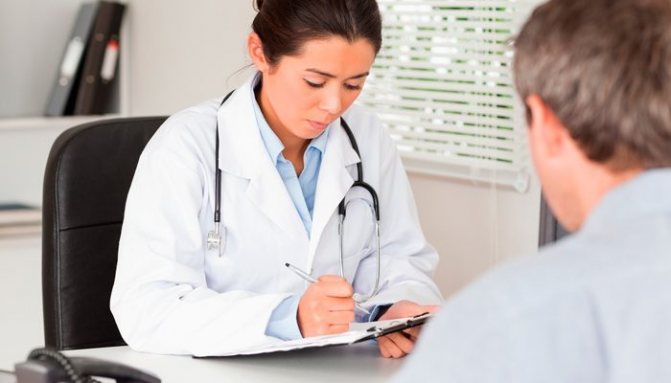
Reflux
Erythromatous reflux gastritis is a common disease. It is manifested by the following symptoms:
- pain in the upper abdomen;
- a burning sensation in the chest;
- belching;
- attacks of nausea.
The disease is often provoked by infections, most often bacterial, less often viral. In addition, stress and medication use may be the cause. The disease leads to deformation of the walls of the stomach and the appearance of deep scars on their surface. In addition, acidity increases, and this leads to ulceration of the walls.
Antrum
With erythematous exudative gastritis with damage to the antrum, inflammation develops in the upper layers of tissue. But if treatment is not started on time, serious complications can develop.
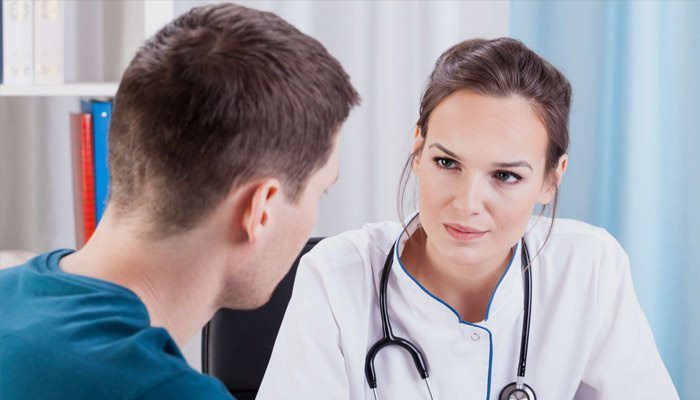
Erythematous antral gastritis develops as a result of autoimmune processes, as well as due to infection or damage by parasites. During the development of antrum gastritis, a huge number of eosinophils accumulate on the inner lining, which are not present on the healthy mucosa. This form of the disease often develops in people prone to allergies.
Chronic
The chronic form of erythematous gastritis is a long-term disease. Relapses occur periodically. The result of a long-term inflammatory process is serious changes in the mucous membrane.
Surface
Erythematous gastritis with damage to the superficial layer is the initial stage of the disease. With this form, only the upper layer of the mucosa is affected. With timely prescribed therapy, the disease can be cured without negative consequences, that is, without entering the chronic stage.
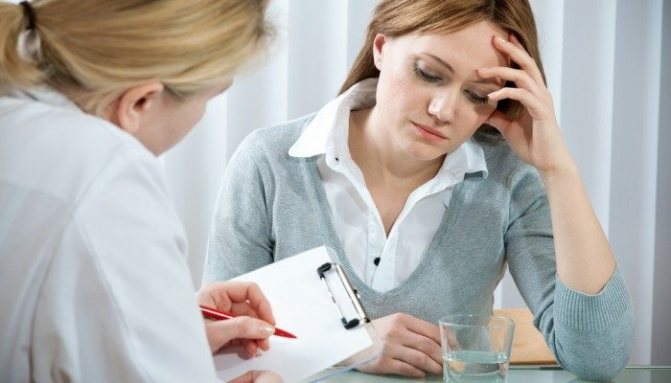
Focal
The erythematous type of focal gastritis is characterized by the appearance of a large number of point lesions. With the development of a focal form in the antrum of the stomach, the risk of ulceration greatly increases.
Why does gastritis occur?
Everyone probably knows the expression: “Forewarned is forearmed.” Knowing the possible causes of diseases, you can prevent them through preventive measures. What is the reason for the appearance of gastric pathologies?
Among the factors that provoke erythematous gastritis are:
- Stress factor (severe stress or chronic stressful situations).
- Drug treatment (some medications, for example, hormonal drugs, antibiotics, NSAIDs, have a destructive effect on the gastric mucosa).
- Non-compliance with diet, frequent consumption of unhealthy foods (hot or cold foods, fatty, spicy foods, smoked foods).
- Unfavorable heredity (presence of relatives with gastrointestinal pathologies).
- Metabolic disease.
- Fungal, viral and bacterial infections.
- Bad habits - smoking and alcoholism (nicotine and ethanol irritate the lining of the stomach).
- Other negative impacts.
Causes of the disease
There are several provoking factors for erythematous gastritis, as with other diseases of the digestive system. Any disease in the body is caused by certain reasons.
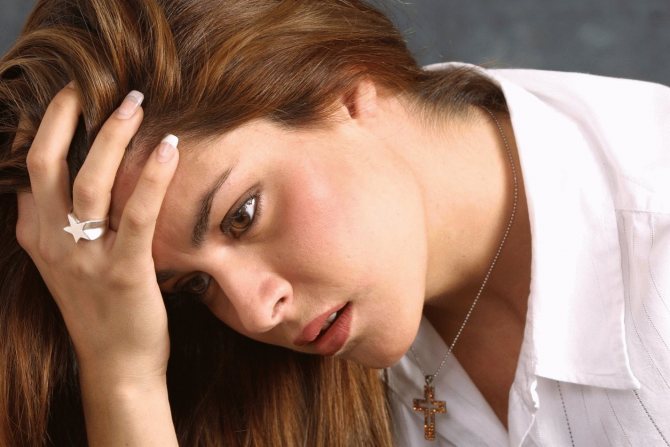
- Stress and depression.
- Taking medications without a doctor's recommendation.
- Lack of proper diet.
- Infections of a bacterial or viral nature.
- Hereditary predisposition.
- Frequent consumption of unwanted foods.
- Frequent states of overwork.
- Metabolic disorders.
- Alcohol and tobacco abuse.
- Helicobacter, common pathogens of diseases of the gastrointestinal tract.
- Dysbacteriosis.
When considering the factors separately, the conclusion suggests itself that the risk of developing chronic gastritis is present in the life of every person.
The rhythm of modern life is such that sometimes there is simply not enough time to have a full lunch or breakfast, leaving only the option of a snack on the go. They buy fast food and carbonated drinks that cause disturbances in the digestive tract.
Everyday stressful situations and inadequate sleep contribute to chronic fatigue and provoke disruptions in the functioning of the body, causing erythematous gastritis.
The disease in question often occurs due to uncontrolled use of medications that have a negative effect on the epithelial tissue of the stomach, deforming the epithelium.
The mucous membrane is irritated due to too frequent consumption of alcohol and smoking cigarettes; abuse destroys the body.
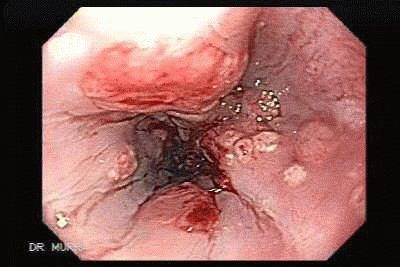
Irritation of the stomach mucosa
If among the relatives of the sick person there are people with the diagnosis, the cause of the disease is obvious - heredity.
If there are lesions of other organs of the digestive system - colitis, pancreatitis or cholecystitis - the risk of erythematous gastropathy increases.
The rate of progression of erythematous gastritis often depends on the patient’s overall health status and on the protective functions of the immune system. If the immune system is strong, the development of gastritis occurs slowly. But the likelihood of recovery is always higher if the disease and causes are noticed on time.
Symptoms of the disease
Signs of erythematous inflammation may hardly appear at the onset of the disease. The main symptom of erythematous gastritis is stomach pain. Most often, this is an aching pain, it appears in the morning or at night, and disappears after eating.
Other characteristic manifestations of pathology are:
- nausea (especially after eating pickles, smoked, fried, fatty or spicy foods);
- vomiting, which brings relief to patients;
- decreased appetite and weight loss.
Belching, heartburn and a burning sensation in the stomach, pain in the esophagus, a feeling of a lump in the throat, diarrhea and constipation are often observed. This symptomatology negatively affects the nervous system, causing depression and constant fatigue.
The presence of at least one of the above signs is a reason to consult a doctor, because early diagnosis and treatment makes it possible to completely get rid of gastritis.
Main symptoms
Based on localization, the following types are distinguished:
- Widespread or multifocal, in some sources it is called pangastritis. This is a type of inflammation of the gastric mucosa when the entire mucosal epithelium or most of it is involved in the process. During an endoscopic examination, the doctor notes uniform hyperemia of the organ.
- Antral erythematous gastritis. The name itself indicates the selective localization of erythema - only the antrum is involved in the process. Inflammation of this area leads to stagnation in the stomach and difficulty moving the food bolus. Fermentation of food residues in combination with a large amount of acid greatly irritates the already inflamed mucous membrane. Therefore, with dietary errors and lack of treatment, the disease can easily transform into erosion, ulcers, atrophy and even cancer.
- Focal erythematous gastritis. Upon examination, the endoscopist doctor sees inflamed, clearly defined lesions on the mucous membrane. The number of foci varies: there are both single and multiple variants of pathology. The lesions can be located in any part of the digestive organ, including the antrum.
- Exudative erythema usually occurs against the background of existing areas of atrophied mucosa. This form of the disease is considered the most unfavorable - it is most often complicated by erosions, ulcers, and is capable of malignancy, that is, of oncological degeneration. Most often, erythematous exudative inflammation is found in the distal (lower) parts of the stomach. The disease is often associated with Helicobacter pylori infection. There is also a synonym for the name; the exudative type of the disease is called eosinophilic gastritis. When performing a morphological analysis, eosinophils are found in the exudate and on the surface of the mucosa, which should not normally be present. Eosinophilia alerts physicians to allergic reactions and parasitic invasions. A patient with eosinophilia requires additional examination.
The symptoms of erythematous gastritis are also not indicative and overlap with the signs of other diseases of the digestive tract. Patients complain of frequent belching and heartburn, pain in the epigastric region, and lack of appetite. After eating, you feel heaviness and discomfort, nausea, and sometimes vomiting.
Patients note a decrease in mood and performance, periodic ailments associated with a slight rise in body temperature.
The symptoms of gastritis at the initial stage are mild, so most patients seek medical help when the disease has already entered the second stage. At the very beginning of the development of inflammation, many patients feel only mild discomfort.
Symptoms of inflammation of the gastric mucosa are manifested by the appearance of pain. They can be aching or very sharp. Most often, the patient feels pain at night and in the morning.
Due to discomfort in the abdomen, patients lose their appetite and begin to lose weight. Do not delay treatment. At the first suspicion of gastritis, you should consult a doctor and undergo examination.
If the disease is detected in the early stages, it can be cured quite simply. If the inflammatory process is advanced, then a long treatment process will be required.
Diagnosis of gastritis
To identify pathology and select adequate therapy and diet for treatment, it is important to carry out diagnostic procedures.
If chronic gastritis is suspected, the following types of medical examinations are used:
- Ultrasound examination.
- Magnetic resonance imaging.
- Fibroesophagogastroscopy.
- Laboratory tests (general blood and urine tests are ordered to measure the pH of the cavity).
An important diagnostic method is endoscopic examination; it reveals the presence of exudative gastritis and identifies foci of inflammatory processes. During the examination, a probe is inserted into a person’s stomach to see the condition of the gastric mucosa. Sometimes the doctor may prescribe additional diagnostic procedures, for example, electrogastroenterography (if reflux is suspected).
Symptoms
The symptoms of gastritis at the initial stage are mild, so most patients seek medical help when the disease has already entered the second stage. At the very beginning of the development of inflammation, many patients feel only mild discomfort.
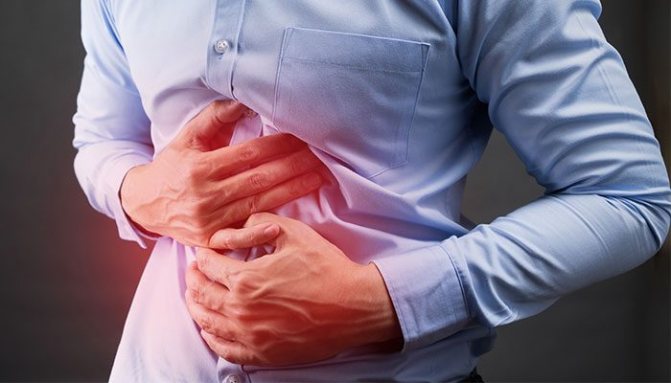
Symptoms of inflammation of the gastric mucosa are manifested by the appearance of pain. They can be aching or very sharp. Most often, the patient feels pain at night and in the morning.
Advice! For night pain, relief comes after the patient eats something. But the pain in the morning occurs after eating some food, after about half an hour.
In addition, the following signs are noted:
- burning in the upper abdomen and chest;
- belching;
- nausea;
- feeling of a lump in the throat;
- bowel problems (diarrhea or constipation).
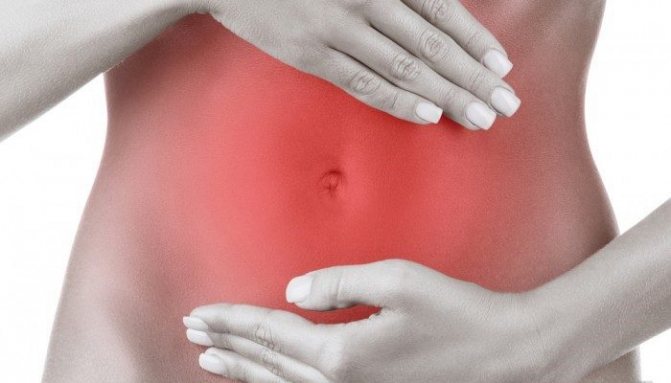
Due to discomfort in the abdomen, patients lose their appetite and begin to lose weight. Do not delay treatment. At the first suspicion of gastritis, you should consult a doctor and undergo examination.
If the disease is detected in the early stages, it can be cured quite simply. If the inflammatory process is advanced, then a long treatment process will be required.
Treatment of the disease: drug therapy
Treatment of erythematous gastritis includes the following techniques:
- Drug therapy.
- Physiotherapy.
- Spa treatment.
The most important aspect of treating pathology is drugs to restore the gastric mucosa. Based on the cause of gastritis, appropriate medications are prescribed, for example:
- Antibacterial if gastritis is caused by Helicobacter bacillus (Amoxicillin, Clarithromycin, Metronidazole).
- Antiparasitic drugs (“Trichopol”) are prescribed for parasitic infestations.
- Stomach-coating drugs (“Vicalin”, “De-nol”).
- Medicines to reduce stomach acidity (Omez, Ranitidine).
- Preparations to increase acidity (“Enzistal”, “Abomin”, “Penzital”).
- To relieve symptoms, antidiarrheals (Smecta, Enterosgel), antispasmodic painkillers (Drotaverine), and antiemetics (Cerucal, Motilium) are prescribed.
Treatment
For erythematous gastritis, treatment is prescribed to a specific patient. Complex therapy is required. In addition to drug treatment, diet plays a very important role in the treatment of erythematous gastritis. In addition, physiotherapy and herbal medicine can be used as additional measures.
Medicines
Drug therapy for gastritis of any form is always prescribed individually. Appointments are made taking into account:
- the general health of the patient;
- the presence of a chronic disease, including one not related to the gastrointestinal tract;
- features of pathology in a particular patient;
- stages of the disease.
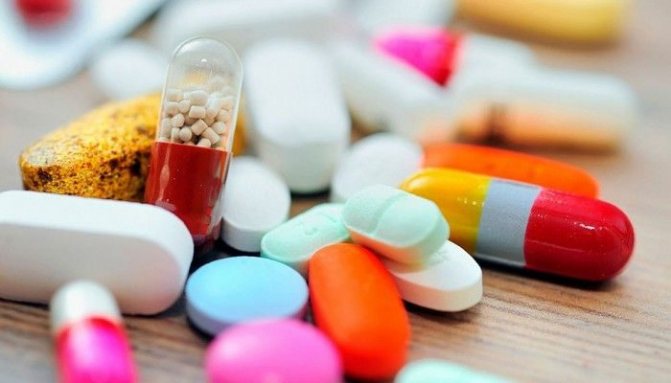
In case of exacerbations of erythematous gastritis, the following medications are prescribed:
- means for normalizing acidity, most often proton pump inhibitors are recommended. Less commonly - H2 blockers;
- tablets for restoring damaged mucous membranes;
- if food is poorly digested, the doctor prescribes special medications containing digestive fermates;
- to improve gastrointestinal motility, prokinetics are prescribed;
- antispasmodics are required to relieve pain;
- If the examination reveals an infection, the doctor will prescribe antibiotics.
In addition to taking medications, special physiotherapy procedures may be prescribed to help fight pathology. This can be magnetic therapy, ultrasound treatment, photophoresis, etc.
Folk remedies
Herbal medicine can be used during the treatment process. Here are some effective recipes:
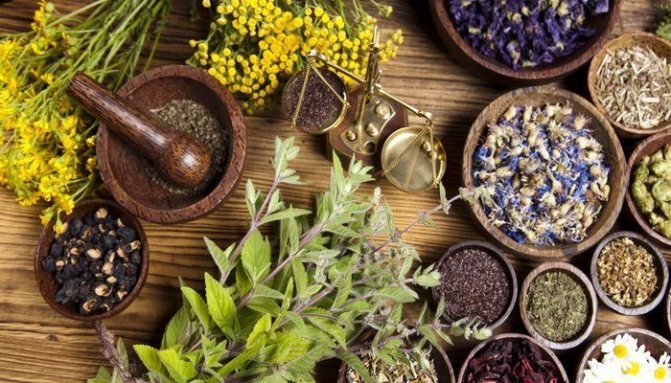
- Chaga. An infusion of water is prepared from this mushroom; the finished preparation should be drunk three times a day, one cup.
- Potato juice. You can only take freshly squeezed juice; if it sits for more than ten minutes after preparation, the drink will lose its medicinal properties.
- Sea buckthorn oil. This product perfectly heals existing damage to the mucous membrane. You need to take a teaspoon twice a day. The course of treatment is 30 days.
Diet
Proper nutrition is one of the main conditions for successful treatment. When preparing a diet, you need to consult a nutritionist or gastroenterologist. Patients are recommended dishes that are gentle on the mucous membrane, but foods containing irritating components will have to be excluded.
In addition, eating hot or very cold foods is prohibited; the optimal serving temperature is a temperature close to body temperature.

Diet is the key to recovery
The main task of patients is to adhere to a diet that will need to be followed throughout their lives. Proper and regular nutrition will help avoid unwanted complications and chronic inflammation.
During exacerbation of gastritis, seasonings, baked goods, pickles, and fatty foods are prohibited; Light, simple dishes are recommended; you need to steam them, it is advisable to eat pureed and boiled food.
It is important to include protein and easily digestible fiber in your diet so that the food is both healthy and nutritious. After the end of the acute period, you can eat stewed vegetables, cereals and jelly, casseroles, omelettes, light salads, fermented milk drinks, salt, sugar (in small quantities).
Another prerequisite for recovery is giving up bad habits (smoking, alcohol). You should also try to avoid chronic stress.
Folk remedies
In addition to medications, you can use folk recipes to treat stomach diseases. From time immemorial, people have known the healing properties of plants, which can be used to alleviate the conditions of patients with various diseases.
But, despite this, traditional treatment methods can only be used after diagnosis and consultation with a doctor.
The following are most often used as folk recipes for the treatment of gastritis:
- Gastric collection (a complex of herbs to restore the mucous membrane).
- Kyzyl May oil (has an anti-inflammatory effect).
- White cabbage juice or freshly squeezed potato juice.
- Propolis tincture (eliminates acidity problems).
- Burdock root decoction.
- Calamus root.
- Aloe juice.
- A decoction of a mixture of medicinal herbs (chamomile, mint, linden and flax seeds).
- Medicinal herbs: marshmallow, St. John's wort, calendula.
Kinds
Pangastritis (or diffuse form) - the entire surface of the mucous membrane is affected;
Focal superficial gastritis - a person feels pain in a specific spot. Inflammation covers several foci; Antrum gastritis – the antrum of the stomach is affected (that is, the place of transition to the duodenum); It is important to note that for any form of erythematous inflammation, patients are contraindicated in consuming chocolate, coffee, soda and alcohol. In order to quickly overcome exudative gastritis, you should give up bad habits and reduce the occurrence of stressful situations.
In case of severe exacerbations of erythematous disease, hospitalization and taking medications prescribed by the attending physician are indicated. Do not buy medications without his advice. There is also a treatment for erythematous exudative gastritis using traditional methods, which must be combined with a limited diet. The first thing you need to do is take infusions or decoctions of herbs during meals.
An effective method of control is considered to be white cabbage juice, which should be drunk warm 2 times a day when the acidity of the stomach is low. And for high acidity, an infusion of birch bark is recommended.
Gastritis of the antrum is characterized by damage to the antrum, where the stomach passes into the duodenum
Gastritis of the antrum is characterized by damage to the antrum, where the stomach passes into the duodenum. In the absence of proper treatment, the type of disease can quickly develop into a stomach ulcer. The antrum of the stomach is necessary to normalize the acidic environment in the hollow organ. When inflammation of the mentioned area occurs, the movement of stomach contents slows down, undigested food stagnates, and fermentation processes begin.
Erythematous exudative gastritis with damage to the antrum does not affect the deep layers of the epithelium, only its surface. Red spots on the walls of the stomach are the result of dilation of blood vessels, which occurs as a reaction of the body to the occurrence of inflammation. The process, when pronounced, leads to bleeding.
Depending on the manifestation of the disease, erythematous gastritis is of several types:
- superficial erythematous gastritis is considered to be the initial stage, which without proper treatment can aggravate the condition and progress to a more serious stage of development. The lining surface of the gastric mucosa becomes inflamed and begins to change;
- focal gastritis is characterized by point manifestations of inflammation in various parts of the digestive organ. If the lesion occurs in the antrum of the stomach, then if left untreated, peptic ulcer disease is possible. This area is adjacent to the duodenum and maintains a normal acidic environment. Antral gastritis slows down the functions of this section and causes stagnation and fermentation of undigested food;
- Erythematous exudative gastritis is characterized by damage to the entire mucous membrane of the organ or most of it. The disease can be caused by parasites or foreign food proteins that cause allergic reactions. The disease develops against the background of the presence of superficial and atrophic gastritis. The second name for this type of disease is eosinophilic gastritis. It is named so due to the accumulation of eosinophils on the mucous membrane, which should not be there at all;
- Pangastritis is the most advanced form, characterized by total damage to the entire area of the stomach.


